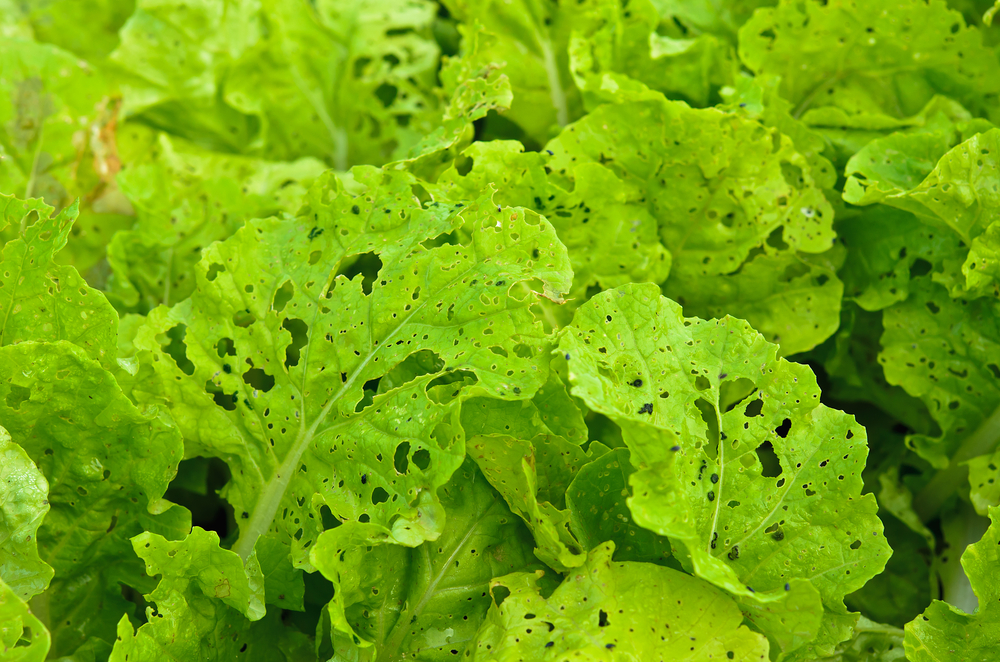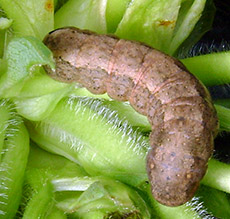
Orugas o gusanos
Gray Worm
Agrotis Sp.
Pathogen:
Insect
Type:
Risk to the plant:
HIGH



DESCRIPTION
WHO CAUSES IT?
The pathogen Agriotis sp., commonly known as gray worm, is a pest that belongs to the order Lepidoptera and the family Noctuidae. Gray worms go through several stages in their development: egg, larva, pupa and adult. Adult females lay their eggs in the soil near host plants. The larvae hatch from the eggs and feed on the roots and underground parts of plants, causing significant damage. After completing several molts, the larvae reach their maximum size and pupate in the soil. The pupal stage can last several weeks, depending on environmental conditions, before emerging as adults, which restart the cycle by laying more eggs. Adults are nocturnal moths that fly and mate during the night.
SYMPTOMS
The disease caused by Agriotis sp., known as the gray worm, affects lettuce causing severe damage to the crop. Gray grubs feed primarily on the roots and base of the stem of lettuce, leading to a decrease in plant vigor and may result in the death of young plants. Symptoms include wilting of plants during the day, visible damage to roots and stems, cutting plants at ground level, reduced growth, and eventually death of affected plants.
- Daytime wilting
- Damage to roots and stems
- Plants cut at ground level
- Growth reduction
- Death of young plants


TEMPERATURE AND HUMIDITY
18-30°C
70-90%

HOW IS IT SPREAD?
Eggs, Larvae, Adult Moths

HOW TO REMOVE IT?
Home remedies
There are no home treatments
Chemical treatments
• DELTAMETHRIN 1.5% [EW] P/V
• DELTAMETHRIN 1.57% [SC] P/V
• DELTAMETHRIN 10% [EC] P/V
• DELTAMETHRIN 2.5% [EC] P/V
• DELTAMETHRIN 2.5% [EW] P/V
• LAMBDA CYHALOTHRIN 0.15% [GR] P/P
• LAMBDA CYHALOTHRIN 0.24% [GR] P/P
• LAMBDA CYHALOTHRIN 0.4% [GR] P/P
• LAMBDA CYHALOTHRIN 10% [CS] P/V
• TEFLUTRIN 0.5% [GR] P/P
Authorized treatments in organic farming
• LAMBDA CYHALOTHRIN 0.15% [GR] P/P
• LAMBDA CYHALOTHRIN 0.24% [GR] P/P
• LAMBDA CYHALOTHRIN 0.4% [GR] P/P
• LAMBDA CYHALOTHRIN 10% [CS] P/V
Insect allies
PREDATORY MITES
LADYBUGS
LACEWINGS
PARASITIC WASPS
HOVERFLIES OR PARASITIC FLIES
PREDATORY BUGS
There are no natural allies
Mycodiplosis oidii (predatory mosquito)
EFFECTIVE PRODUCTS TO ELIMINATE THIS PEST
Sponsored link
Sponsored link
Sponsored link
Sponsored link
Sponsored link
Sponsored link
Effective against all types of fungi
- Crop rotation to avoid the accumulation of larvae in the soil.
- Use of light traps to capture adult moths.
- Application of biological insecticides based on Bacillus thuringiensis.
- Maintain good crop hygiene by eliminating plant residues.
- Increase the biodiversity of the agroecosystem to favor natural enemies of the gray worm.
- Implementation of physical barriers such as meshes to prevent adults from entering the crop.
- Constant monitoring of the crop to detect the presence of the pest early.
- Use of entomopathogenic nematodes to control larvae in the soil.
























